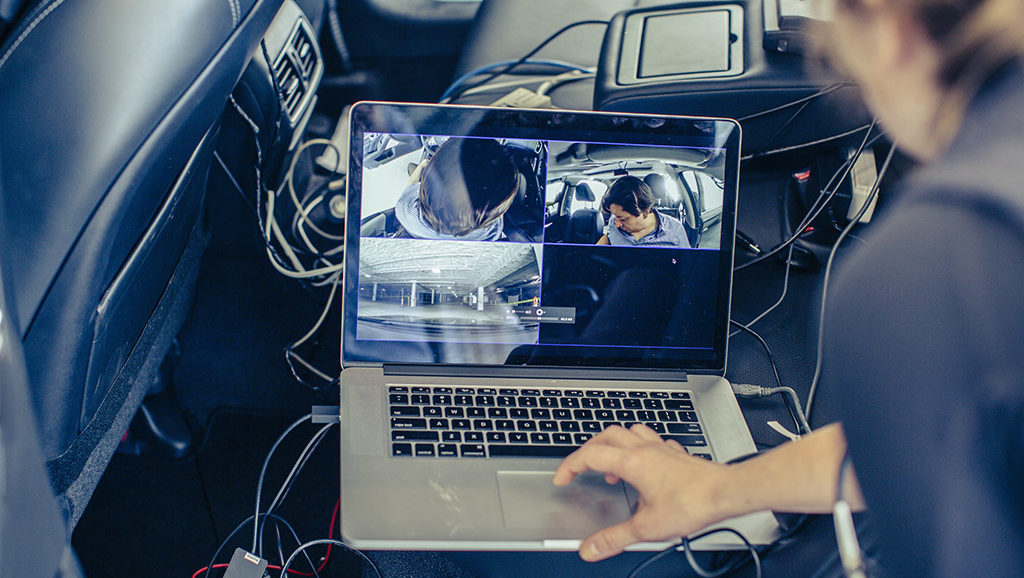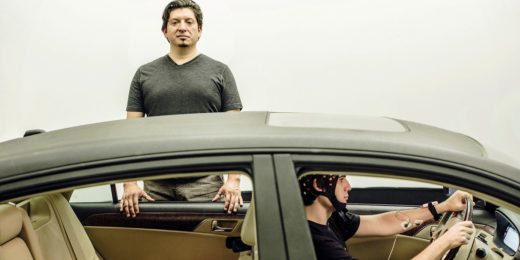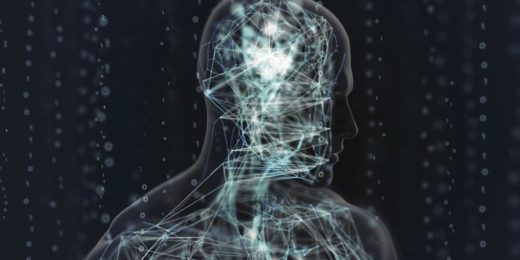For this fall's issue of Stanford Medicine magazine, which focused on all things digital, I wrote a story featuring the work of Pablo Paredes, PhD, instructor of radiology and of psychiatry and behavioral sciences at Stanford. Paredes aims to enhance people's mental well-being and reduce stress — his strategy harnesses a suite of technologies, all comforting in their own quirky ways, many of which were fitted for a car.
There are hybrid robot-therapists that help you hash out your day's stress, lights that change color to subtly influence mood and even an in-car virtual reality experience that has passengers submerged in an open-sea excursion.
To fully understand the vision of Paredes, I had a chance to demo several of his technologies. One of these early demos, which I've informally dubbed "the heartbeat seat," had me cruising around in a tricked-out driver's seat rigged to beat to the rhythm of my own heart.
Aside from the wonderful weirdness of hearing and feeling your own heartbeat, you might wonder why Paredes pursued such a gadget. When I asked him, he told me there's some early research that suggests a heart can sync up with a slightly different rhythm if exposed in the proper way. This could ultimately promote a lower resting heart rate (which is associated with lower stress).
To feed the heart's rhythm into the technology, the user (in this case me) wears a stretchy band fitted with sensors around his or her rib cage. These sensors monitor the heart beat and use signals from the person's pulse to guide the beating technology embedded in the driver's seat and connected to the car's speaker system.
Buckled in and accompanied by Paredes and a research partner, I pushed the car’s "Start engine" button. As the car rumbled to life, my heartbeat thudded through the speaker system, each lubdub vibrating through the seat back into my spine.
It was equal parts bizarre and cool.
Acutely aware of my audible heart and the presence of my two passengers, I reached down to shift the car into reverse and found a small bulb that slides on a platform in place of a gearshift.
Slightly embarrassed, I turned to my copilot. “I’ve never driven a car like this... do you just...”
Lubdub-lubdub
My heartbeat quickened.
Lubdub-lubdub-lubdub.
I was nervous. And we could all hear it.
Let me interject here and say that this isn't the technology's intended use. If ever commercially available, the idea is to listen and modulate your heart rate alone. But for me, it was important to have both scientists in the car to make sure everything went smoothly.
After briefly fiddling with the shifter nob, I put the car in reverse and backed out of the parking lot, making my way to a side street. We cruised along for a minute, and my heart rate settled into a more relaxed rhythm.
"Now we're going to dial back the beat manually, so that what you feel and hear won't be the natural rhythm of your heart anymore," Paredes told me.
The pace of the lub-dubs slowed. Knowing that the sounds of my heart were no longer being broadcast put me at ease.
I only drove with the slower beat for a few minutes, before returning to the lab's parking lot — so I don't know if my heart beat would have synced up to the slightly slower beat. But for research participants that might test the technology in the future, the trial would run longer, giving their heart a better chance to acclimate to the new beat.
For me, the test run facilitated an understanding of how the technology worked — that, and something of an unintended social experiment.
Photo by Timothy Archibald






